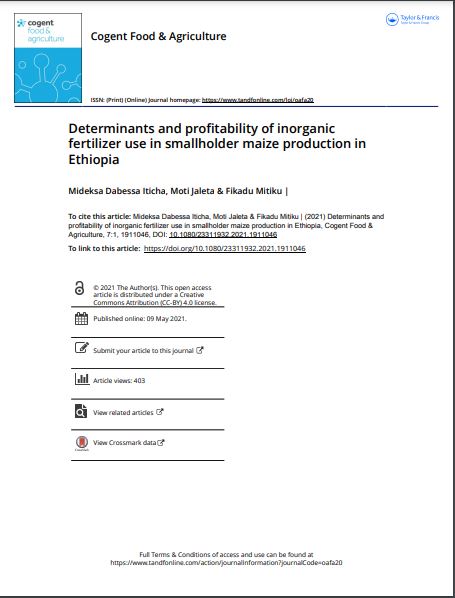Inorganic fertilizer is one of the key technologies that could enhance crop productivity. However, farmers are still using lower than the recommended rates and yet there are a lot of farmers who are not using fertilizers at all. In this study, we analyze determinants and profitability of fertilizer use using a survey data collected from 174 randomly selected maize producers in NonoBenja District, Ethiopia. The data were analyzed using descriptive statistics, Heckman’s two-stage model, net profit analysis, and Kendall’s coefficient of concordance. Results show that the sampled respondents on average applied 142.8 kg/ha inorganic fertilizer (NPS+Urea) which is only 71.5% of the recommended rate. Age of household head, farm income, and use of input credit affected the probability of fertilizer use positively. Education level of household head, livestock holding and frequency of contact with extension agent positively influenced both the probability and intensity of fertilizer use whereas perception on cost of production influenced both the use and intensity of use negatively. Off-farm income positively influenced the intensity of fertilizer use. Farmers applying the recommended and above the recommended rates of inorganic fertilizer in maize production were more profitable than those applying lower than the recommended rates. Results imply that smallholders should be encouraged to use and enhance their use intensity of inorganic fertilizer in maize production for better productivity and profitability.

